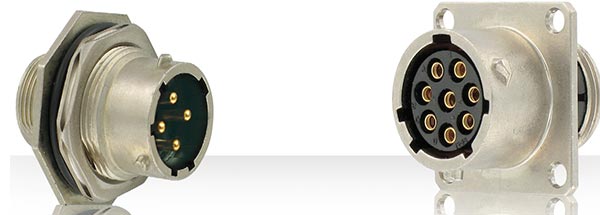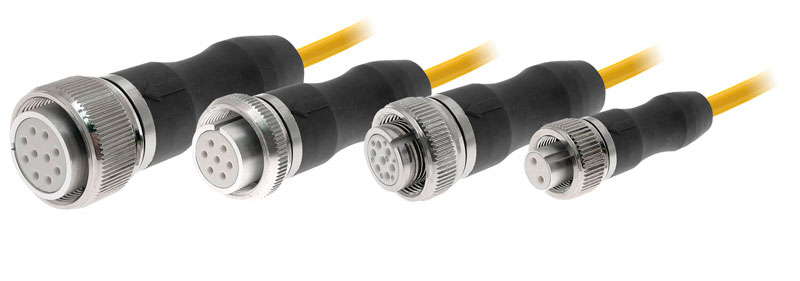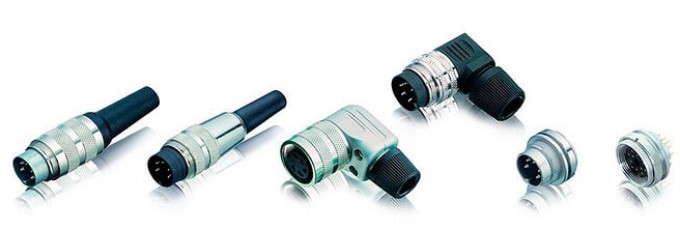In the field of electronics, a variety of connectors can be used to transmit power and signals, and transport network signals and data through an installation. These multi-pin plug contact designs are easy to install and remove.
Over the years, circular connectors have become some of the most common, as they are more compact and can provide a small envelope compared to their rectangular counterparts. Different applications require different designs. Here are some of the more common ones.
Circular Power Connectors
Circular power connectors allow efficient disconnection and reconnection of a power cord from your device. They were developed to replace power cord wiring, which can often be damaged or require extensive service when a power source is disturbed. The introduction of circular connectors for military use provided a quick and compact solution to this problem.
Circular power connectors can be used in many applications, from medical equipment to street and vehicle lighting, and from industrial machines to consumer electronics. The application and the connector depend on the amount of current required and the environmental conditions of the device.
Their circular shape is perfectly suited to various fastening methods, such as screw, push-pull and bayonet designs, and they are usually made of metal, plastic or both. Rubber can also be used in waterproof or dust-proof connectors. These locking styles are easy to operate and some can also provide waterproofing.

Circular connectors can pack a large number of contacts in a relatively compact size. For example, eight contacts arranged in a circular arrangement are more compact than the same eight contacts in a straight or rectangular row arrangement. However, when higher pin counts are required, rectangular connectors may be a better option. Unlike rectangular connectors, circular connectors do not have the same embedding or polarization options.
Circular power connectors are rated for voltages from 200 to 600 ac/dc, and from 1 to 2 A up to several hundred amps, and are available in a wide range of pin counts and configurations.
When specifying circular power connectors, international power standards such as IP (International Protection Marking standard ratings) and Mil-spec must be taken into account. IP standards help determine if a connector is protected against dust, water, etc.
M12 and M8 connectors
One of the most common connectors used in industrial automation is the M12 connector. This small but critical device evolved as industrial factories moved from parallel wiring systems to connect machinery and communication devices to a more secure form of distributed control.
B-92 Alpha’r MultiContact Connectors
Alfa’r’s B-92 series connectors are circular MutiContacts MC, of robust construction and great flexibility. We can find them in 5 sizes T-10, T-20, T-30, T-40 and T-70 being their pin configurations from 2 pins to 39. We have more than 60 different configurations according to the requirements of each case: from 1mm 7.5 A to 5.75 mm 80 A pins.
We have a range of circular industrial connectors compatible with all Socapex products and connectivity solutions.
Difficult environments
Because most industrial environments are harsh, often causing signal and data interference, possible contamination from dirt and water, extreme temperature variations and vibration, these circular connectors must be robust and protected against EMI/RFI.

To withstand these hostile environments, these connectors are typically made of brass or aluminum, or in some washdown environments, various types of composite plastics. They usually use copper alloy conductors, but also integrate gold to improve conductivity. Finally, they often have an IP68 or higher seal that allows them to be immersed in water or even sealed tightly.
The locking styles of the robust connectors also vary. They can be push-pull, breakaway, twist lock or screw type. Finally, to avoid mismatching, they are often keyed and color-coded, and blind mating is more desirable.
Specification of circular connectors
Knowing a number of data is critical to safely specifying circular connectors. On the one hand, you must know the electrical voltage and current of each contact to ensure that the connector has the proper number of contacts to meet the power needs of your device. Second, know all the functions that the connector will need to complete. If you need a compact design that can carry power and coaxial signals, for example, a hybrid design may be the best choice.
The type of termination must also be considered. For example, solder contacts are usually easier to seal against moisture penetration, while crimped contacts are easier to repair in the field. In this sense, if the connector is to be used in hostile environments, both the materials and the sealing must be taken into account, as indicated above.
Finally, reliability is crucial. For devices that require frequent switching on and off, a connector with a rated capacity of at least 5,000, but preferably more than 10,000 switching cycles, should be chosen. This ensures that contacts remain safe in mission-critical applications, such as medical or military use.
